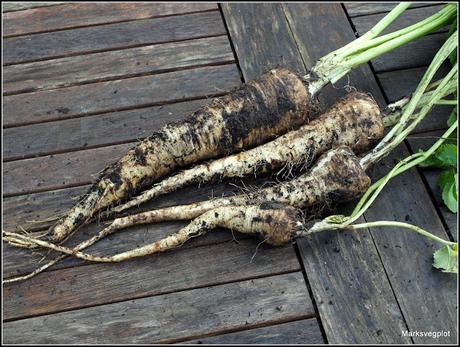
A veg-gardener who didn't like Parsnips would probably not grow them. For a start, they look dull, with none of the colourful flamboyance of the Carrot (especially the trendy purple ones). The skins are often disfigured by the rusty scars of the disease canker. The foliage dies down before the vegetable is ready for harvesting, and can be brown, slimy and untidy. The Parsnip is seldom a good-looker (except in those ridiculously optimistic Seed Merchants' catalogues).
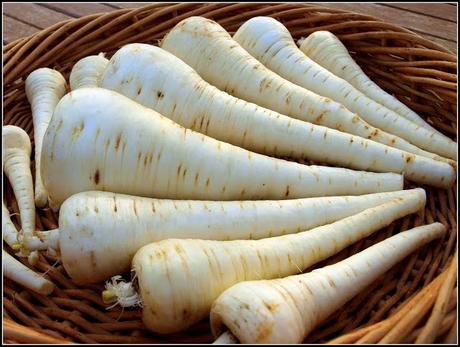
However, as a gardener I know that the external appearance of a vegetable is not necessarily a good guide to its taste or overall worth. The scabby skin of the Parsnip is easily peeled off to reveal glowing white flesh beneath - and of course this peeling also releases the gorgeous sweet aroma too. As a food-lover, I think one's opinion of the Parsnip is probably influenced primarily by how it had been cooked when you first encountered it. I would agree that a boiled Parsnip is often totally unattractive - soggy on the outside and with a tough core - and could easily put you off them for life, but a roasted Parsnip is a completely different proposition! Preferably cooked in Goose fat, of course. Maybe with a little drizzle of Maple syrup or honey, a few grinds of black pepper, a sprig or two of fresh Thyme...?
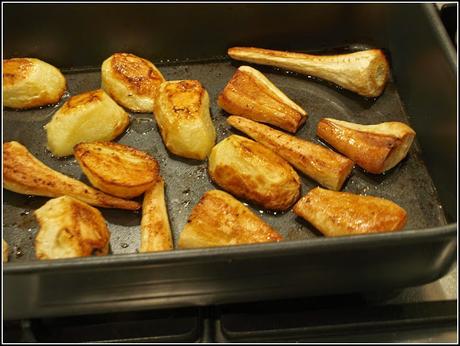
Roasted Parsnips and Potatoes
Curried Parsnip soup is another classic dish, and deservedly so, with the natural sweetness of the Parsnips providing an intriguing counterpoint to the fragrant curry spices. Sliced ultra-thin on a mandolin and then deep-fried to make crisps ("chips" to those of you in the USA) Parsnips become a much more upmarket snack than their boring potato cousins. I could go on. I like Parsnips!
As a gardener I also know that whilst Parsnips can sometimes be slow to germinate, once they get going they are generally trouble-free and easy to look after. Their powerful roots will push down easily 2 or 3 feet in search of moisture, and watering is therefore only necessary in times of real drought. Parsnip foliage too is seldom the subject of much insect attack. True, the leaf-miners often move in, but the damage they do is largely cosmetic.
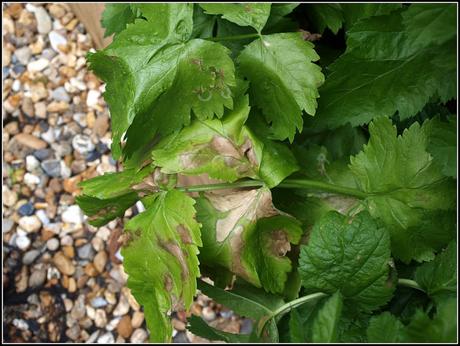
Leaf-miner damage on Parsnip leaves
But for me, the best thing about Parsnips is that they deliver their crop in Winter, when other crops can be much less plentiful than in the warmer months. Furthermore, a Parsnip will remain in good condition for several months without significant deterioration. Sown in, say, April, they can be ready to harvest in October, but will quite happily wait until the following February or March. However, if you leave them too long (until after Spring begins in earnest), they will send up flower-stalks (they are biennial, after all) and will no longer be fit to eat.
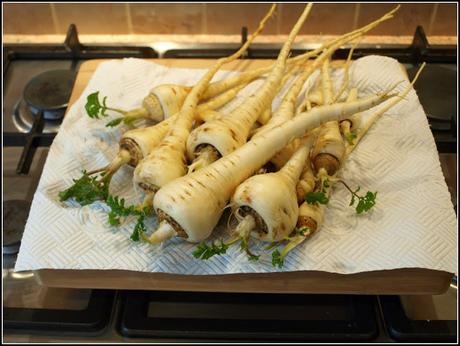
These Parsnips were harvested on 20th February (2015)
Since I have said that the Parsnip is the hero of Winter, here are a couple of Winter-related tips:
1. If you are likely to want to dig up any of your Parsnips while there is snow on the ground, it's a good idea to mark where they are growing with some long sticks - one at each end of the row, and one at the point where you last dug (so presumably where you will dig next...)
2. Parsnips can be pretty difficult to dig up if they get big and put down long roots. This is exacerbated by frozen soil, so it might be a good idea to dig some before the soil freezes and store them in a box of sand. Keep the box outdoors or perhaps in an unheated shed.
3. Parsnip seeds do not germinate well in cold, wet soil, so it is best to sow them in late Spring, when the soil has warmed-up a bit. They don't remain viable very long either, and it is a good idea to use fresh seed every year and not rely on leftovers from previous packs.
